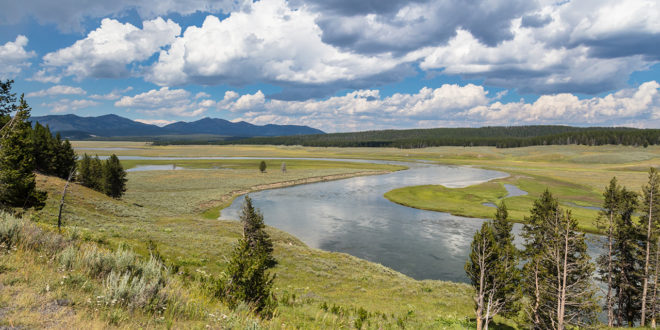What you are seeing these days in the Greater Yellowstone Area’s long, hot summer may just be the start of a trend, as research regarding climate trends in the region indicates a drier, warmer Yellowstone National Park.
Scientists with the U.S. Geological Survey, Montana State University and the University of Wyoming studied climate change in the Greater Yellowstone Area (GYA) from 1950-2018. They evaluated how these changes could progress by 2100 based on various greenhouse gas emission scenarios and found that average GYA temperatures increased by 2.3 degrees Fahrenheit and could increase an additional 5-10 degrees Fahrenheit by 2100. All in all, the report covers the future of the 22 million-acre GYA in detail, giving interesting parties data to plan for the future Yellowstone region climate.
“Greater Yellowstone is valued for its forests, rivers, fish and wildlife,” said Steve Hostetler, a USGS scientist and co-lead author of the report. “The trend towards a warmer, drier climate described in this study will likely affect ecosystems in the region and the communities that depend on them.”
The report also found that by the end of the century, the GYA could see:
- annual precipitation increase by 9-15 percent, but the combination of elevated temperatures and higher evaporation rates will likely make future conditions drier in summer;
- reduced soil moisture in the summer months, which will be an additional stress on plant communities that could make drought and wildfires more common;
- 40-60 more days per year exceeding 90 degrees Fahrenheit in Bozeman, Montana, and in Jackson, Pinedale and Cody, Wyoming, if there is little to no mitigation of future emissions.
We already know this year is a historically hot and dry summer, and that trend should continue in coming weeks; fire danger levels are rising and there’s little rain in the short-term forecast. Temperatures have already reached 100 degrees in the region, streamflows are lower, and wildfires are already being fought. (Read more about what’s happening in Grand Teton National Park in terms of the fire danger.)
The report also documents the effects of climate change on the GYA over recent decades, including:
- average temperature was as high or higher than any period in the last 20,000 years and likely the warmest of the last 800,000 years, according to geologic studies;
- the growing season increased by nearly two weeks since 1950;
- average annual snowfall decreased by 23 inches since 1950 and measurable snow has become rare in June and September.
Photo of the Hayden Valley courtesy National Park Service.
 Yellowstone Insider Your Complete Guide to America's First National Park
Yellowstone Insider Your Complete Guide to America's First National Park





